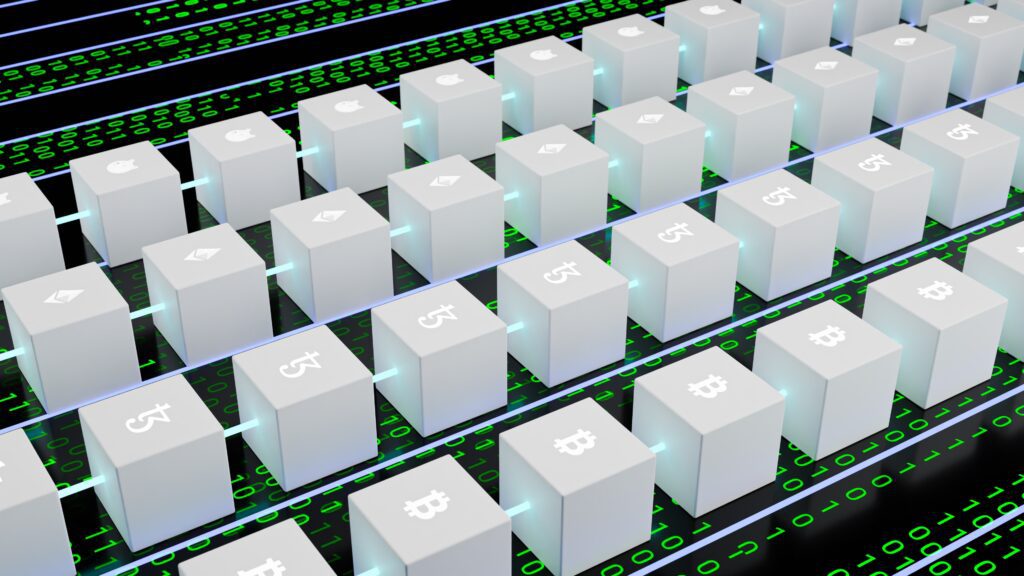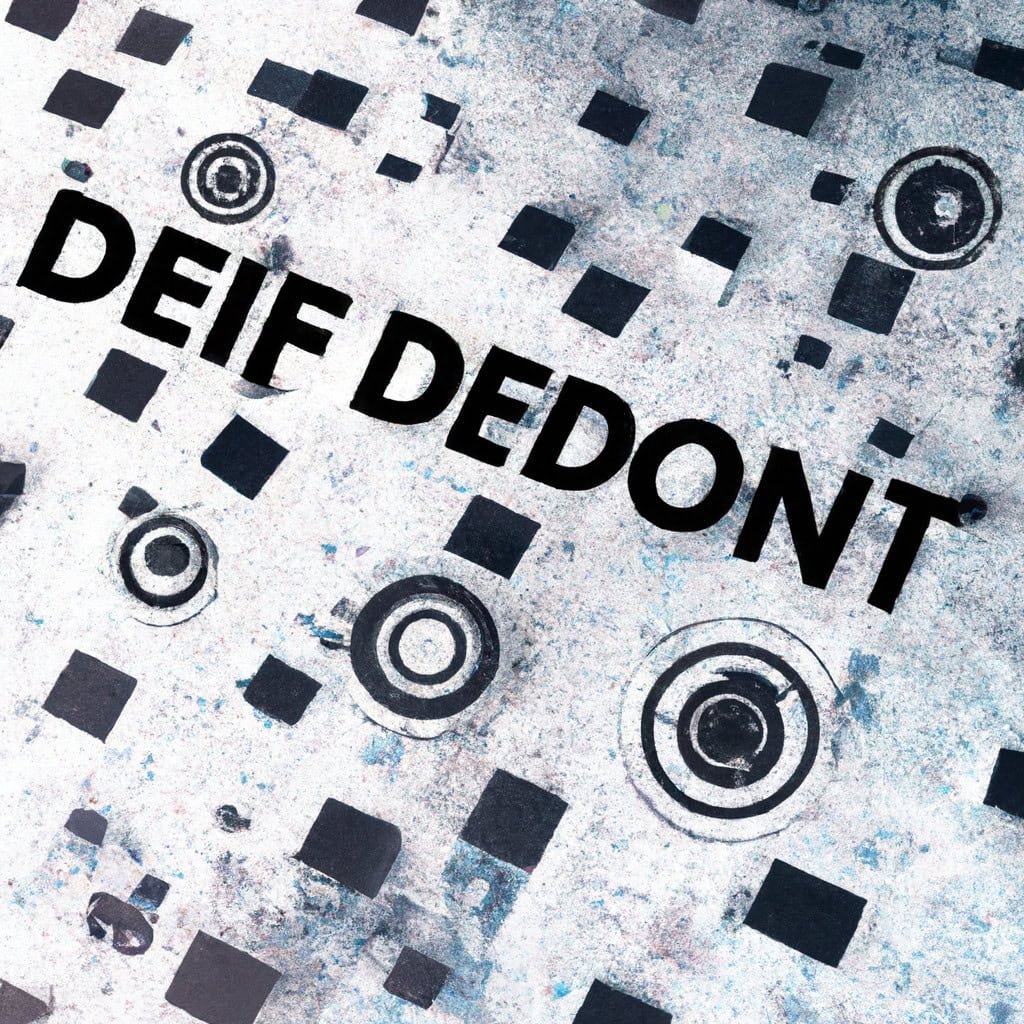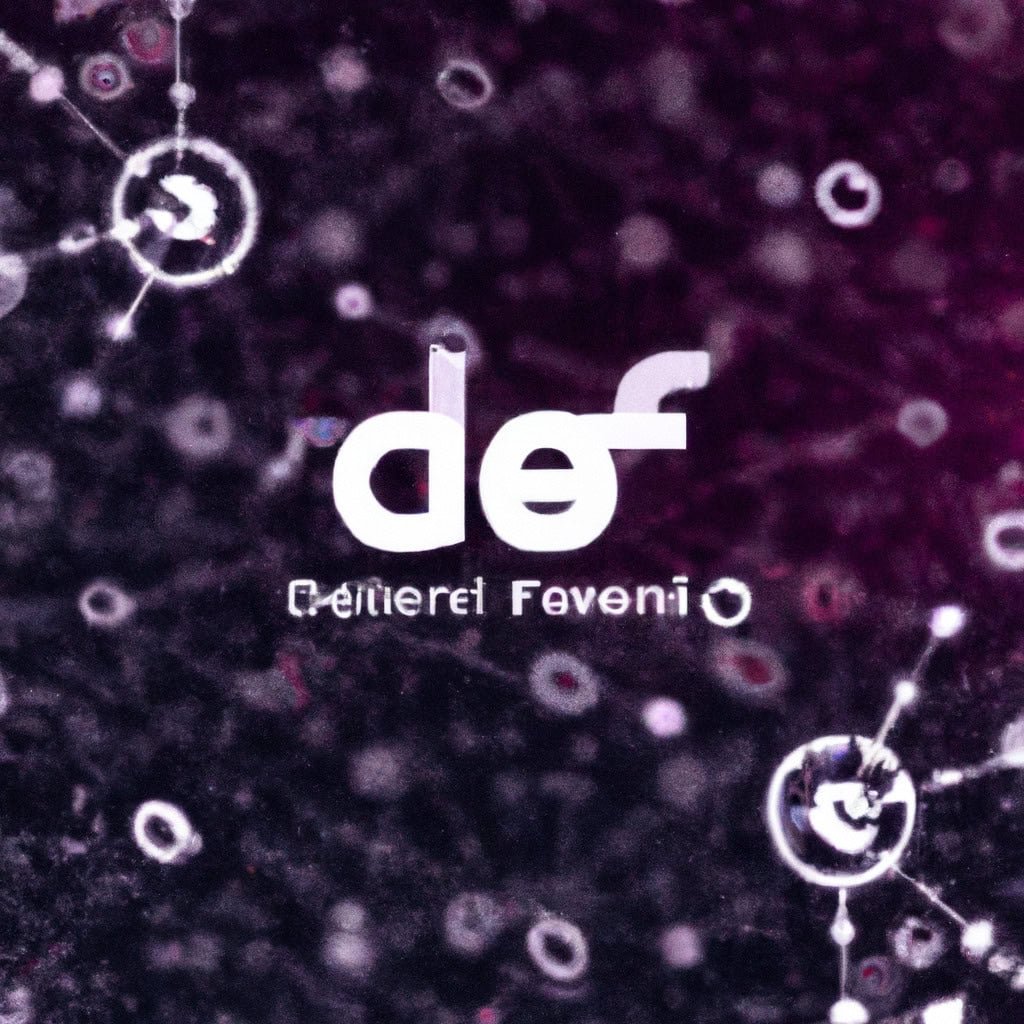Imagine a world where financial transactions are not controlled by a centralized authority but instead operate on decentralized platforms. Well, that world exists, thanks to the rise of DeFi (Decentralized Finance) platforms. These innovative platforms provide an exciting alternative to traditional banking systems, offering users the freedom to access a wide range of financial services without the need for intermediaries. From borrowing and lending to trading and investing, DeFi platforms are revolutionizing the way we interact with money. In this article, we’ll explore the fascinating world of DeFi platforms and discover how they are redefining the future of finance.
What is DeFi?
Definition of DeFi
DeFi, short for Decentralized Finance, refers to a set of financial applications and platforms that are built on blockchain technology. Unlike traditional centralized financial systems, DeFi aims to create an open, transparent, and permissionless financial system that is accessible to anyone with an internet connection. DeFi platforms leverage smart contracts, which are self-executing contracts with the terms of the agreement written into code. These smart contracts enable the automation of financial transactions, lending, borrowing, trading, and other financial activities without the need for intermediaries such as banks or financial institutions.
Key Features of DeFi Platforms
DeFi platforms offer several key features that differentiate them from traditional financial systems. Firstly, they provide increased accessibility, allowing individuals from around the world to participate in financial activities without the need for a bank account or approval from a centralized authority. Secondly, DeFi platforms offer enhanced financial privacy, as transactions and account balances are pseudonymous and not linked to real-world identities, providing users with a greater level of privacy and control over their financial information.
Another significant advantage of DeFi platforms is the lower fees involved compared to traditional financial intermediaries. By eliminating the need for intermediaries, DeFi platforms offer lower transaction fees, making financial activities more cost-effective for users. Lastly, DeFi platforms empower individuals with greater financial control, as smart contracts enable users to manage their assets, create financial strategies, and execute transactions autonomously, reducing the reliance on third parties and giving individuals more control over their own finances.
Benefits of DeFi Platforms
Increased Accessibility
DeFi platforms have revolutionized financial services by providing access to financial tools and services to individuals who may not have had access to traditional banking systems. In many parts of the world, people are excluded from financial services due to the lack of infrastructure or bureaucratic hurdles. DeFi platforms remove these barriers, allowing anyone with an internet connection to participate in financial activities such as lending, borrowing, and trading. This increased accessibility promotes financial inclusion and empowers individuals to take control of their financial well-being.
Enhanced Financial Privacy
Privacy is a crucial aspect of financial transactions, and DeFi platforms have made great strides in offering enhanced financial privacy to their users. By utilizing blockchain technology, DeFi platforms allow users to transact pseudonymously, without revealing their real-world identities. This offers individuals a level of privacy not found in traditional financial systems where personal and financial information is often shared with multiple intermediaries. Enhanced privacy not only protects users from potential identity theft and fraud but also promotes financial autonomy and freedom.
Lower Fees
One of the significant advantages of DeFi platforms is the elimination of intermediaries, resulting in lower transaction fees. Traditional financial systems involve banks, payment processors, and other intermediaries, all of which charge fees for their services. These fees can quickly add up and make financial activities expensive for users. DeFi platforms, on the other hand, leverage the efficiency of blockchain technology and smart contracts, reducing the need for intermediaries and minimizing transaction costs. This makes DeFi platforms more cost-effective and accessible for users, particularly for those who engage in frequent transactions.
Greater Financial Control
DeFi platforms empower individuals with greater control over their own financial assets. Through smart contracts, users can manage and control their assets autonomously, without relying on third parties. This eliminates the need to trust centralized institutions with one’s wealth and reduces the risk of censorship or unauthorized access to funds. Additionally, DeFi platforms offer various options for financial strategies and investment opportunities, enabling users to tailor their financial activities according to their specific needs and objectives. The ability to have complete control over their finances gives individuals a sense of empowerment and financial autonomy.

Popular DeFi Platforms
Compound
Compound is a leading DeFi platform that allows users to lend and borrow digital assets. Through Compound, users can supply their assets to liquidity pools and earn interest on their deposits. At the same time, borrowers can use these deposited assets as collateral to borrow other digital assets. Compound operates on the Ethereum blockchain and leverages its smart contract capabilities to automate and streamline the lending and borrowing process. The platform has gained popularity due to its ease of use and the ability to earn interest on idle assets, providing users with a seamless way to put their crypto assets to work.
Aave
Aave is a decentralized lending platform that offers users the ability to deposit their digital assets and earn interest. Users can also borrow assets by using their deposited assets as collateral. Aave differentiates itself by offering a feature called “flash loans,” which allow users to borrow funds without collateral, as long as the borrowed amount is returned within the same transaction. This unique feature has opened up new possibilities for arbitrage, trading, and leveraging opportunities within the DeFi space. Aave has gained popularity for its innovative lending features and its commitment to security and transparency.
Uniswap
Uniswap is a decentralized exchange protocol built on the Ethereum blockchain. It allows users to trade cryptocurrencies directly from their wallets without the need for intermediaries. Uniswap utilizes an automated market maker (AMM) system, which relies on liquidity pools and the concept of liquidity providers. Users can contribute their assets to these pools and earn fees from the trading activities that take place on the platform. Uniswap has gained significant traction due to its user-friendly interface and its role in facilitating the trading of a wide range of tokens within the DeFi ecosystem.
MakerDAO
MakerDAO is a decentralized lending platform that operates on the Ethereum blockchain. It allows users to lock up their Ether (ETH) as collateral and borrow DAI, a stablecoin pegged to the US dollar. MakerDAO’s stablecoin is unique in that its value is maintained through a combination of collateralization, overcollateralization, and dynamic pricing mechanisms. By locking up their ETH as collateral, users can generate DAI and maintain exposure to the cryptocurrency market while avoiding the volatility associated with other digital assets. MakerDAO has gained popularity as a reliable and transparent decentralized lending platform within the DeFi ecosystem.
Synthetix
Synthetix is a decentralized synthetic asset issuance platform built on Ethereum. It allows users to create and trade synthetic assets, or “synths,” that are tied to the value of real-world assets such as stocks, commodities, or currencies. Synthetix achieves this by utilizing its native cryptocurrency, SNX, as collateral for these synths. Users can stake their SNX tokens to create synths and earn rewards by providing liquidity to the platform. Synthetix has emerged as a popular platform within the DeFi space for its ability to replicate the exposure to traditional assets in a decentralized and permissionless manner.
Liquidity Providers in DeFi
Definition of Liquidity Providers
Liquidity providers play a crucial role in the operation of DeFi platforms. In simple terms, liquidity providers are individuals or entities that contribute their assets to liquidity pools on DeFi platforms, enabling others to trade or borrow these assets. By providing liquidity, they ensure that there are sufficient assets available for users to perform their desired transactions. In return for their contribution, liquidity providers earn certain rewards, often in the form of fees generated from the trading or borrowing activities on the platform.
Roles and Responsibilities
The primary role of liquidity providers is to ensure the liquidity and efficiency of DeFi platforms. By depositing their assets into liquidity pools, they increase the supply of assets available for trading or borrowing, which makes the market more liquid and reduces the cost of transactions. Additionally, liquidity providers have the responsibility of managing the risks associated with providing liquidity. They need to carefully assess the potential risks, such as price volatility, impermanent loss, or smart contract vulnerabilities, and adjust their strategies accordingly to minimize risk exposure.
Benefits of Being a Liquidity Provider
Being a liquidity provider in DeFi platforms offers several benefits. Firstly, liquidity providers earn rewards in the form of fees generated from the transactions or borrowing activities on the platform. This provides a passive income stream for individuals who are willing to contribute their assets to the liquidity pools. Secondly, by providing liquidity, individuals have the opportunity to participate in the growth of the DeFi ecosystem, as the value of the tokens associated with the liquidity pools may increase over time. Lastly, liquidity providers can diversify their investment portfolio by spreading their assets across various liquidity pools, thereby reducing risks and potentially increasing returns.

Smart Contracts and DeFi
Introduction to Smart Contracts
Smart contracts are self-executing contracts with the terms of the agreement directly written into code. They run on the blockchain and automatically execute when specific conditions are met. Smart contracts eliminate the need for intermediaries and enable decentralized and autonomous execution of transactions, agreements, or other interactions. They are tamper-proof, transparent, and provide users with an unprecedented level of trust, as the terms and conditions of the contract are enforced by the underlying code and cannot be altered without consensus from the network participants.
Role of Smart Contracts in DeFi Platforms
Smart contracts form the backbone of DeFi platforms, as they enable the automation and execution of various financial activities without the need for intermediaries. DeFi platforms utilize smart contracts to facilitate lending, borrowing, trading, and other financial transactions. For example, in a lending platform, a smart contract automatically executes the lending agreement by locking up the borrower’s collateral and issuing the borrowed funds. Similarly, in a decentralized exchange, smart contracts facilitate peer-to-peer trading by matching orders and settling transactions. Smart contracts enable efficiency, transparency, and trust in the DeFi ecosystem by removing the reliance on centralized authorities and intermediaries.
Risks and Challenges in DeFi
Security Vulnerabilities
As with any technology, DeFi platforms are not immune to security vulnerabilities. Smart contracts can be susceptible to bugs, coding errors, or malicious attacks, potentially leading to the loss of funds or unauthorized access to user assets. Additionally, the interconnected nature of DeFi platforms and the reliance on external protocols and oracles can expose the ecosystem to vulnerabilities. It is crucial for users to thoroughly assess the security measures, audits, and protocols employed by DeFi platforms before engaging in any financial activities. Furthermore, users should practice good security hygiene, such as using strong passwords, enabling multi-factor authentication, and storing their private keys securely.
Regulatory Uncertainty
The decentralized nature of DeFi and the lack of intermediaries make it challenging for traditional regulatory frameworks to address all aspects of this emerging industry. The regulatory landscape surrounding DeFi platforms is still evolving, with varying levels of regulatory scrutiny in different jurisdictions. Uncertainty about compliance requirements, taxation policies, and potential legal issues can create obstacles for the mass adoption of DeFi platforms. The industry needs collaborative efforts between regulators, developers, and users to strike a balance between innovation and consumer protection, ensuring the long-term viability and legitimacy of DeFi platforms.
Lack of Accountability and Fraud Risks
The absence of intermediaries in DeFi platforms brings certain risks related to accountability and fraudulent activities. While smart contracts offer transparency and immutability, they cannot prevent users from engaging in fraudulent or malicious activities. DeFi platforms have witnessed instances of rug pulls, exit scams, or projects failing due to lack of accountability or fraudulent intentions. It is essential for users to conduct thorough research, assess the credibility of projects, and be cautious when interacting with unknown or unverified platforms. Additionally, the DeFi community is actively working on developing reputation systems, decentralized governance models, and protocols to mitigate these risks and promote trust within the ecosystem.

Interoperability in DeFi
Importance of Interoperability
Interoperability is a crucial aspect of the DeFi ecosystem, as it allows different DeFi platforms and applications to communicate and interact with each other seamlessly. By enabling interoperability, users can access a wider range of services, assets, and liquidity across different platforms, enhancing the overall user experience and expanding the possibilities within the DeFi ecosystem. Interoperability also promotes market efficiency, as it reduces fragmentation and enables users to unlock the full potential of their assets without being limited to a single DeFi platform.
Efforts to Achieve Interoperability in DeFi Platforms
Various initiatives and protocols have emerged to address the need for interoperability in the DeFi space. Cross-chain bridges and protocols, such as Polkadot, Cosmos, and Chainlink, aim to connect different blockchain networks and enable the seamless transfer of assets and data. Additionally, decentralized liquidity protocols like Uniswap, Sushiswap, and 1inch Exchange provide aggregation services that allow users to access liquidity from multiple platforms. These efforts towards interoperability not only enhance the user experience but also foster collaboration and innovation within the DeFi ecosystem, paving the way for the future growth and development of decentralized finance.
Future Trends in DeFi
Integration with Traditional Finance
As the DeFi ecosystem continues to evolve and gain traction, integration with traditional finance is becoming a significant trend. DeFi platforms have the potential to bridge the gap between traditional banking and the digital asset space by providing additional financial services and opportunities. This integration can enable users to seamlessly transfer their assets between traditional banking systems and DeFi platforms, access decentralized loans or savings accounts, and benefit from the innovations and efficiencies offered by blockchain technology. Such integration has the potential to revolutionize the financial industry and redefine the relationship between individuals and financial institutions.
Expansion of DeFi Ecosystem
The DeFi ecosystem is expanding rapidly, with new platforms, applications, and financial products emerging regularly. As more individuals recognize the benefits of DeFi, they are actively participating in the ecosystem by contributing liquidity, utilizing decentralized applications, and exploring new opportunities. This growth is driving innovation, encouraging collaboration, and fostering healthy competition within the DeFi space. We can expect to see continuous expansion and diversification within the DeFi ecosystem as it matures and attracts more users from various industries and sectors.
Evolution of DeFi Governance
DeFi platforms are on a journey towards decentralized governance, where decision-making authority is distributed among token holders and community members. Governance in DeFi allows participants to have a say in the development, protocol upgrades, and strategic direction of the platforms they use. With the rise of decentralized autonomous organizations (DAOs) and on-chain voting mechanisms, users can actively participate in shaping the future of DeFi. This shift towards decentralized governance ensures transparency, reduces the concentration of power, and promotes community-driven decision-making, which aligns with the core principles of the DeFi movement.

DeFi and Web3.0
DeFi as a Catalyst for Web3.0
DeFi is considered a catalyst for the development of Web3.0, the next evolution of the internet. Web3.0 aims to create a decentralized internet where users have control over their data, identity, and digital assets. DeFi platforms exemplify the principles of Web3.0 by providing individuals with financial autonomy, privacy, and ownership over their assets. By leveraging blockchain technology and smart contracts, DeFi platforms are paving the way for a more inclusive, equitable, and decentralized internet architecture. The synergy between DeFi and Web3.0 is driving the innovation and development of decentralized applications and protocols that will reshape how we interact with the digital world.
Synergies between DeFi and Web3.0
The synergies between DeFi and Web3.0 go beyond the technical aspects. Both movements share a common vision of empowering individuals, fostering financial and digital inclusion, and promoting transparency and trust in the digital realm. DeFi platforms are pushing the boundaries of what is possible with financial services and introducing new models of governance, ownership, and value creation. Web3.0, on the other hand, envisions a future where users are in control of their personal data, are rewarded for their contributions, and have the ability to participate in decision-making processes. Together, DeFi and Web3.0 are driving the transformation of the internet and redefining the relationship between individuals and technology.
Challenges to Mass Adoption
Usability Issues
Usability remains a significant challenge for the mass adoption of DeFi platforms. While the technology and concepts behind DeFi are innovative, the user interfaces and experience can be complex and unintuitive for newcomers. The provision of user-friendly interfaces, educational resources, and intuitive onboarding processes are crucial to overcoming this barrier and attracting a wider audience. Simplifying complex concepts, enhancing user experience, and providing robust customer support will be instrumental in making DeFi more accessible to the general public.
User Education and Technical Knowledge
Education and technical knowledge are vital for individuals to fully understand and utilize DeFi platforms effectively. As this technology is still relatively new and constantly evolving, there is a learning curve associated with interacting with DeFi platforms. Users need to educate themselves about the risks, security best practices, and the specific features of each platform before participating in any financial activities. Promoting user education through tutorials, guides, and educational content will empower individuals to make informed decisions and mitigate potential risks.
Integration with Legacy Systems
Another challenge to mass adoption of DeFi platforms lies in the integration with legacy systems. Traditional financial infrastructures and regulatory frameworks are still predominantly centralized and do not easily accommodate the decentralized nature of DeFi. Bridging the gap between DeFi platforms and legacy systems requires collaborative efforts from regulators, financial institutions, and DeFi developers. Establishing regulatory clarity, addressing compliance requirements, and developing interoperability solutions are necessary to build trust and enable a seamless transition from traditional finance to the decentralized financial ecosystem.
In conclusion, DeFi platforms have emerged as a disruptive force in the financial industry, offering increased accessibility, enhanced privacy, lower fees, and greater financial control to individuals worldwide. With platforms like Compound, Aave, Uniswap, MakerDAO, and Synthetix leading the way, users can lend, borrow, trade, and engage in a wide range of financial activities without intermediaries. However, challenges such as security vulnerabilities, regulatory uncertainty, and usability issues need to be addressed for mass adoption. The future of DeFi holds promise, as it integrates with traditional finance, expands its ecosystem, and drives the evolution of decentralized governance. As DeFi continues to catalyze the development of Web3.0, individuals are empowered with more control over their financial and digital lives, setting the stage for a decentralized and inclusive future.


